はじめに
こんにちわ
今回の記事ではスポーツ中に起こる脳振盪に関して、その定義の歴史的な移り変わりを見ていこうと思います
脳振盪に関しては世界的な学会が2001年から数年に一度の頻度で実施され、現在(2022年1月)までに計5回開催されています(開催年:2001, 2004, 2008, 2012, 2016)
(本来は2020年にも開催予定でしたがCOVID-19により延期となっています。ただ、今年2022年10月にオランダのアムステルダムで第6回目の学会が開かれる予定です)
そしてその学会が開催される度に、脳振盪に関してその当時の最新の知見や科学的根拠、推奨する事などをまとめたConsensus Statement(共同宣言書)が発表されます
今回はそのConsensus Statementに記載されている脳振盪の定義を、2001年の第1回学会から直近の2016年の第5回学会のものまで比較してみたいと思います
(ちなみに今までの学会は全てヨーロッパで開催されており、1回目がオーストリアのウィーン、2回目がチェコのプラハ、3・4回目がスイスのチューリッヒ、5回目がドイツのベルリンで行われています。因みに延期となった2020年はフランスのパリで実施予定だったそうです)
スポーツ中の脳振盪とは?① ”脳振盪の定義の変遷”
2001年 第1回学会(ウィーン・オーストリア)での脳振盪の定義
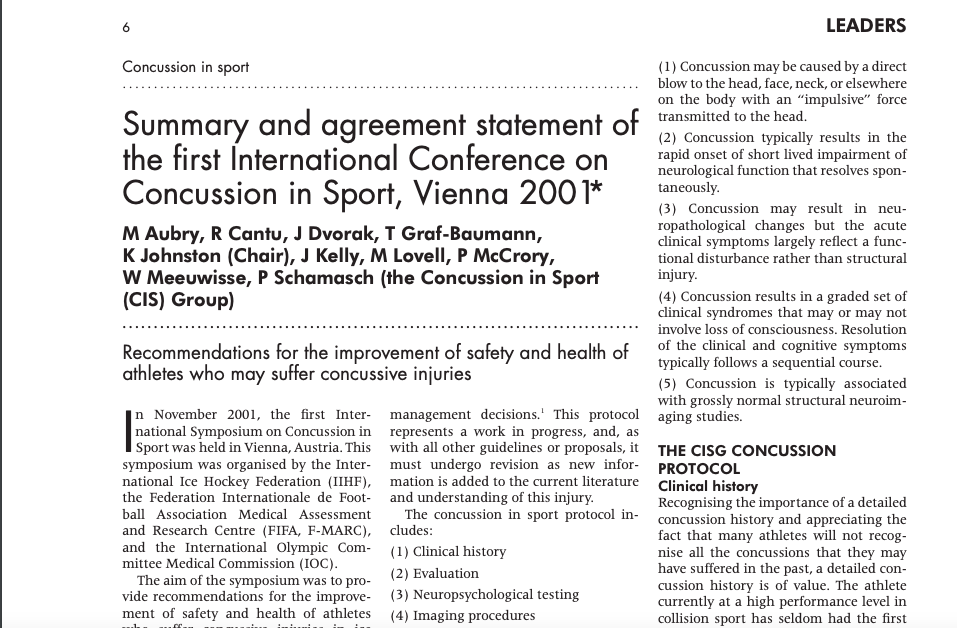
“Concussion is defined as a complex pathophysiological process affecting the brain, induced by traumatic biomechanical forces. Several common features that incorporate clinical, pathological, and biomechanical injury constructs that may be used in defining the nature of a concussive head injury include:
(1) Concussion may be caused by a direct blow to the head, face, neck, or elsewhere on the body with an “impulsive” force transmitted to the head.
(2) Concussion typically results in the rapid onset of short lived impairment of neurological function that resolves spontaneously.
(3) Concussion may result in neuropathological changes but the acute clinical symptoms largely reflect a functional disturbance rather than structural injury.
(4) Concussion results in a graded set of clinical syndromes that may or may not involve loss of consciousness. Resolution of the clinical and cognitive symptoms typically follows a sequential course.
(5) Concussion is typically associated with grossly normal structural neuroimaging studies.” (Aubry et al., 2002)
2004年 第2回学会(プラハ・チェコ)での脳振盪の定義
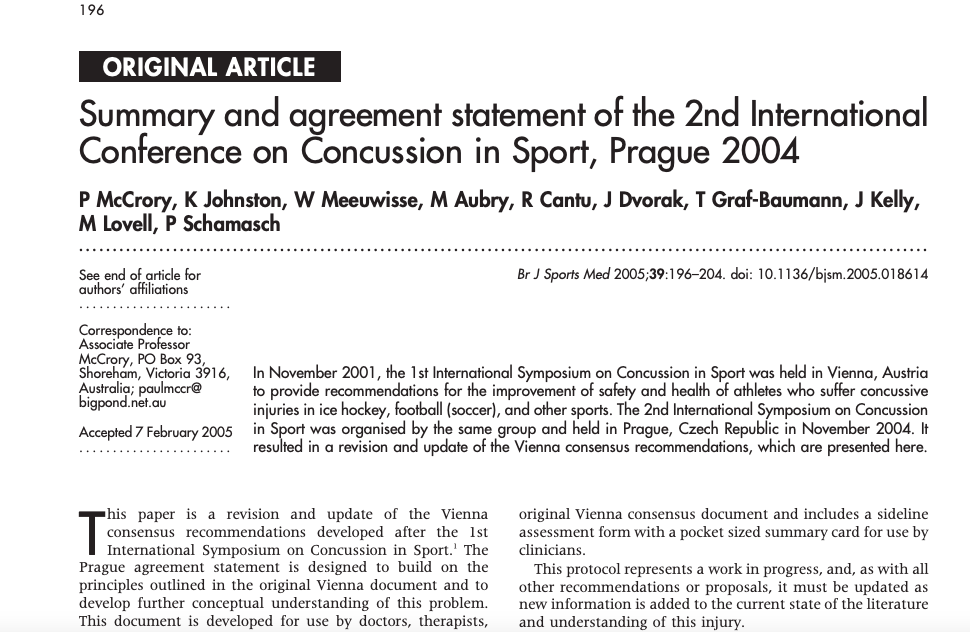
‘‘Sports concussion is defined as a complex pathophysiological process affecting the brain,
induced by traumatic biomechanical forces. Several common features that incorporate clinical, pathological, and biomechanical injury constructs that may be used in defining the nature of a concussive head injury include the following.
(1) Concussion may be caused by a direct blow to the head, face, neck, or elsewhere on the body with an ‘‘impulsive’’ force transmitted to the head.
(2) Concussion typically results in the rapid onset of short lived impairment of neurological function that resolves spontaneously.
(3) Concussion may result in neuropathological changes, but the acute clinical symptoms largely reflect a functional disturbance rather than structural injury.
(4) Concussion results in a graded set of clinical syndromes that may or may not involve loss of consciousness. Resolution of the clinical and cognitive symptoms typically follows a sequential course.
(5) Concussion is typically associated with grossly normal structural neuroimaging studies.” (McCrory et al., 2005)
第1回と第2回の脳振盪の定義の違い
・最初の文章
第1回では最初の文章が”Concussion is defined as…”(脳振盪の定義とは、、、)で始めってますが、第2回では”Sports Concussion is defined as …”(スポーツ脳振盪の定義とは、、、)となっています
脳振盪は交通事故や日常生活中の転倒などでも起こることから、それと区別するために”Sports Concussion”としたのかもしれません
2008年 第3回学会(チューリッヒ・スイス)での脳振盪の定義
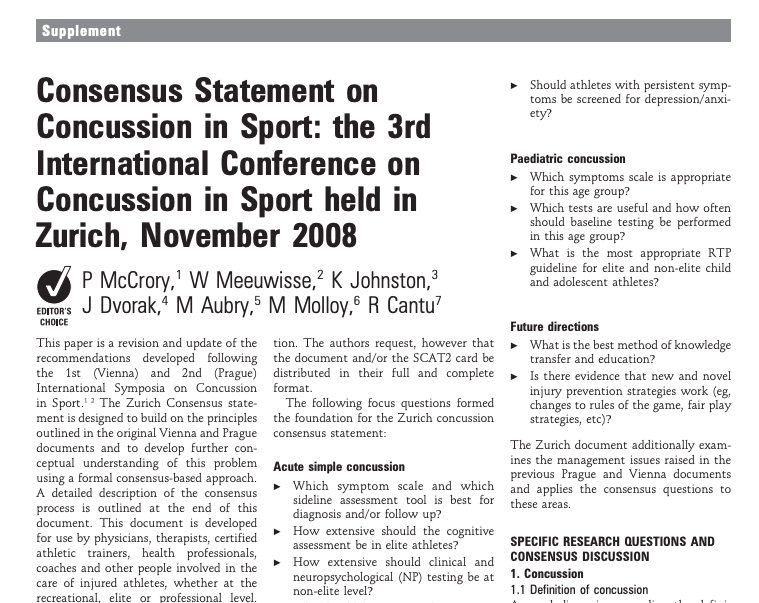
“Concussion is defined as a complex pathophysiological process affecting the brain, induced by traumatic biomechanical forces. Several common features that incorporate clinical, pathologic and biomechanical injury constructs that may be utilised in defining the nature of
a concussive head injury include:
(1) Concussion may be caused either by a direct blow to the head, face, neck or elsewhere on the body with an ‘‘impulsive’’ force transmitted to the head.
(2) Concussion typically results in the rapid onset of short-lived impairment of neurologic function that resolves spontaneously.
(3) Concussion may result in neuropathological changes but the acute clinical symptoms largely reflect a functional disturbance rather than a structural injury.
(4) Concussion results in a graded set of clinical symptoms that may or may not involve loss of consciousness. Resolution of the clinical and cognitive symptoms typically follows a sequential course; however it is important to note that in a small percentage of cases however, postconcussive symptoms may be prolonged.
(5) No abnormality on standard structural neuroimaging studies is seen in concussion.”(McCroy et al., 2009)
第2回と第3回の脳振盪の定義の違い
・最初の文章
一番最初の文章では第2回では”Sports concussion is defined as…”(スポーツ脳振盪の定義とは、、、)となっていたのが、第3回では”Concussion is defined as…”(脳振盪の定義とは、、、)になっています。これは第1回の時と同じ始まりです。なぜ1回目と同じ文言にしたかは不明ですが、シンプルに表現する意図があったのかもしれません
・(1)の文章
(1)の文章では、第2回では”Concussion may be caused by a direct blow to the head,,, “となっていたのが、第3回では”Concussion may be caused either by a direct blow to the head,,,”となっています。ですので第3回では”either”が足されています。”either”は「AまたはB」、「AまたはBやC」というように、複数の選択肢がある時に用いられます。第3回目の文章の意訳は「脳振盪は頭部・顔面・首への直接の打撃や、頭部に衝撃が伝わる他の体の部位への打撃で起こる」となります。ここでわざわざ”either”を用いたのは、読者に複数の選択肢(ここでは頭部、顔面、頸部、他の体の部位)があることをこの文章を読み切る前に伝える為とも考えられます
また、私の肌感覚では当時のスポーツ界では「脳振盪は頭部の怪我なので、頭を打っていなければ大丈夫」というような誤解がありましたので、そのような誤解を解消するために”either”を使って「頭部、顔面、首、または他の体の部位」というように選択肢を同列に扱う意図があったのかもしれません(これらは予想の域を超えないので、まったく違うかもしれませんが。。。)
・(4)の文章
この文章は大幅に変わっています。ここでは “however it is important to note that in a small percentage of cases however, postconcussive symptoms may be prolonged.”という文章がシンプルに追加されています
この追加された文章の意訳は「少数ではあるが脳振盪後の症状が長引く場合があることは重要なので記載する」となります。第1回や第2回の学会の際に発表された文献でも長引く脳振盪の症状に関しての記載はありましたが、「脳振盪の定義」の部分に入ってきたのはこの第3回からです。これは脳振盪の研究や知見も増えてきて、症状が長引く場合も少なからずあるということがわかってきた所以かと思います
・(5)の文章
この文章も大きく変わっています。第2回では”Concussion is typically associated with grossly normal structural neuroimaging studies.” だったものが、第3回では “No abnormality on standard structural neuroimaging studies is seen in concussion. “となっています
第3回の文章では最初が”No”から始まっていますが、これはその後に続く文章を非常に強く否定する時に使います。日本語に意訳するとわかりやすいかと思いますが、第2回では「脳振盪は画像検査では概ね正常である」となりますが、第3回では「脳振盪では通常の画像検査では異常は見られない」となります。第2回では「〜かもしれない」程度の意味合いですが、第3回では「〜見られない」とほぼ断定しています。これも脳振盪に関しての研究が進んだ為に変わったのかと思います
2012年 第4回学会(チューリッヒ・スイス)での脳振盪の定義
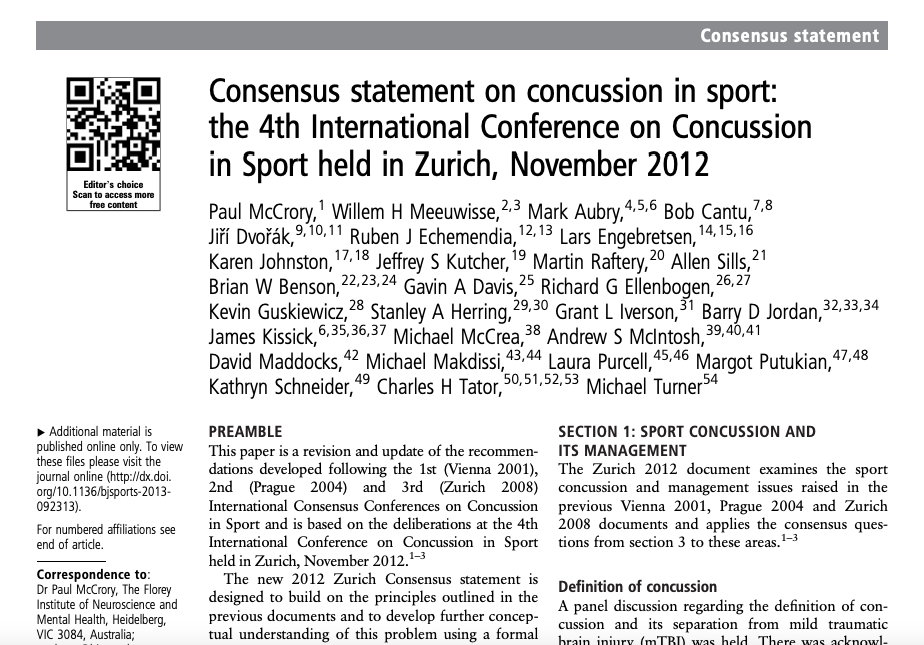
“Concussion is a brain injury and is defined as a complex pathophysiological process affecting the brain, induced by biomechanical forces. Several common features that incorporate clinical, pathologic and biomechanical injury constructs that may be utilised in defining the nature of a concussive head injury include:
(1) Concussion may be caused either by a direct blow to the head, face, neck or elsewhere on
the body with an ‘‘impulsive’ force transmitted to the head.
(2) Concussion typically results in the rapid onset of short-lived impairment of neurological function that resolves spontaneously. However, in some cases, symptoms and signs may evolve over a number of minutes to hours.
(3) Concussion may result in neuropathological changes, but the acute clinical symptoms largely reflect a functional disturbance rather than a structural injury and, as such, no abnormality is seen on standard structural neuroimaging studies.
(4) Concussion results in a graded set of clinical symptoms that may or may not involve loss of consciousness. Resolution of the clinical and cognitive symptoms typically follows a sequential course. However, it is important to note that in some cases symptoms may be prolonged. (McCroy et al., 2013)
第3回と第4回の脳振盪の定義の違い
・最初の文章
第4回では最初の文章が”Concussion is a brain injury and defined as …”(脳振盪は脳の怪我であり、その定義は、、、)で始まっています。第3回までにはなかった”Concussion is a brain injury”という文言があります。言葉の定義はシンプルにした方がわかりやすいかと思いますが、それでもわざわざ第4回でこの文言を脳振盪の定義に入れたということは、「脳振盪は脳の怪我である」という部分を強調もしくは明確に認知させる意図があったのかもしれません(これも単なる予想ですが)
・(2)の文章
第1回、第2回、第3回と変わっていなかった(2)の文章が、第4回では文が追加されました
追加された文は”However, in some cases, symptoms and signs may evolve over a number of minutes to hours.”で、意訳は「脳振盪の症状や兆候は数分〜数時間かけて発生するケースもある」となります
つまり、今までは「脳振盪の症状は急速に起きて、、、」というような内容の文章でしたが、「少し遅れて症状が発生する場合もある」というような意味合いになるかと思います
これは非常に重要な文言で、スポーツ現場では一見脳振盪の症状や兆候がなさそうでもしばらくすると発生する時もあり、「脳振盪の症状がないから大丈夫」という訳ではなく、しばらくは経過観察が必要ということを意味しています
・(3)の文章
これは変化ではありませんが、第3回では(3)と(5)の2つの文章で分かれて書かれていた内容が、第4回では(3)として1つの文章にまとめられています
2016年 第5回学会(ベルリン・ドイツ)での脳振盪の定義
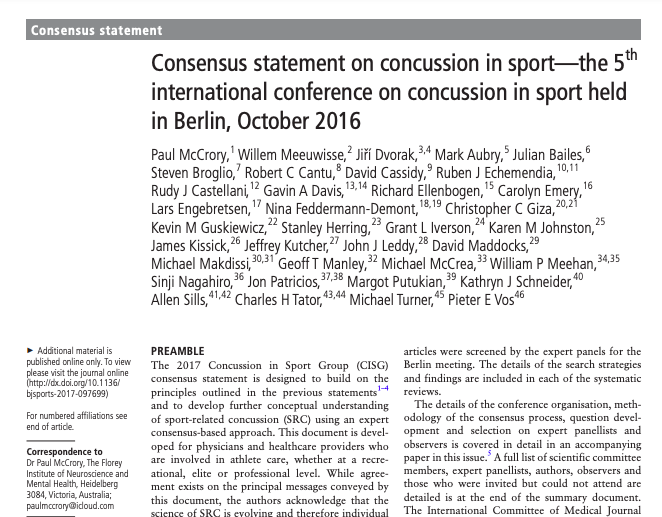
“Sport related concussion is a traumatic brain injury induced by biomechanical forces. Several common features that may be utilised in clinically defining the nature of a concussive head injury include:
(1) SRC may be caused either by a direct blow to the head, face, neck or elsewhere on the body with an impulsive force transmitted to the head.
(2) SRC typically results in the rapid onset of short-lived impairment of neurological function that resolves spontaneously. However, in some cases, signs and symptoms evolve over a number of minutes to hours.
(3) SRC may result in neuropathological changes, but the acute clinical signs and symptoms largely reflect a functional disturbance rather than a structural injury and, as such, no abnormality is seen on standard structural neuroimaging studies.
(4) SRC results in a range of clinical signs and symptoms that may or may not involve loss of consciousness. Resolution of the clinical and cognitive features typically follows a sequential
course. However, in some cases symptoms may be prolonged.
The clinical signs and symptoms cannot be explained by drug, alcohol, or medication use, other injuries (such as cervical injuries, peripheral vestibular dysfunction, etc) or other comorbidities (eg, psychological factors or coexisting medical conditions). (McCroy et al., 2017)
第4回と第5回の脳振盪の定義の違い
・最初の文章
まず明らかに違うのが”Sport related concussion”(スポーツ関連脳振盪)という言葉を使っている点かと思います。これは”SRC”と略されて他の文章でも用いられています。第2回の定義でも”Sports concussion”と言う似た表現がされていましたが、今回は更に”related”(関連する)と言う言葉も入っています。なぜ一度抜けた”Sport”の文言が入ったのか、更には”related”も含めた理由はわかりませんが、何かしらの意図があるのだと思います
また、最初の文章の1行目も大きく変わっています。第4回では”Concussion is a brain injury and is defined as a complex pathophysiological process affecting the brain, induced by biomechanical forces.”となっていますが、第5回では”Sport related concussion is a traumatic brain injury induced by biomechanical forces.”と、より短く簡潔になっています
ここでは第4回での”defined as a complex pathophysiological process affecting the brain”の文言が第5回では一切無くなっています。これは脳振盪の定義をシンプルにするという役割もあったかと思いますし、個人的にはまだ脳振盪も未知な事が多いのでそのような含みを持す上でも簡潔な定義にしたのかとも思います
さらに、第5回では(4)の文章の下で補足事項的に、”The clinical signs and symptoms,,,”という文章があります。これは意訳すると「脳振盪の症状や兆候はアルコールや薬物などによるものではなく、、、」というような、脳振盪を他の障害や疾患と区別する必要性があることを意図しています
おわりに
2001年ウィーンでの第1回会議から、15年後の2016年ベルリンでの第5回会議までの脳振盪の定義を見直してみました
こう見てみると学会が開かれる事に脳振盪の定義はその当時の研究成果を反映したり、文言を加えたりなどして結構変わっているのではないかと思います
さらに次回の第6回でもまた脳振盪の定義は変わってくると思われます
その時はまた比較してみたいと思います
最後までお読みいただきましてありがとうございました


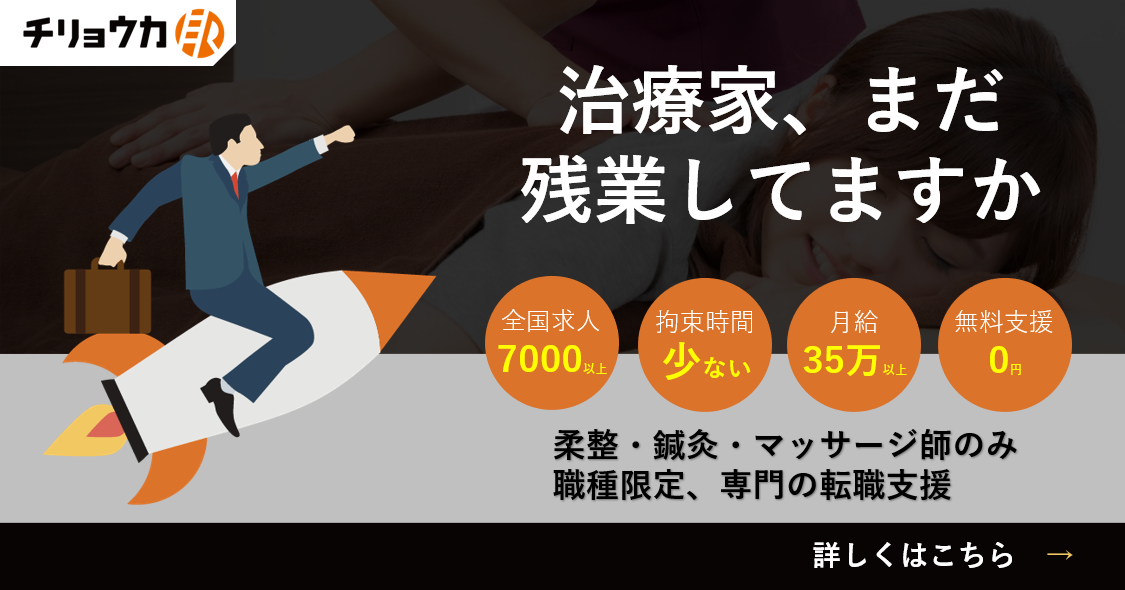




コメント